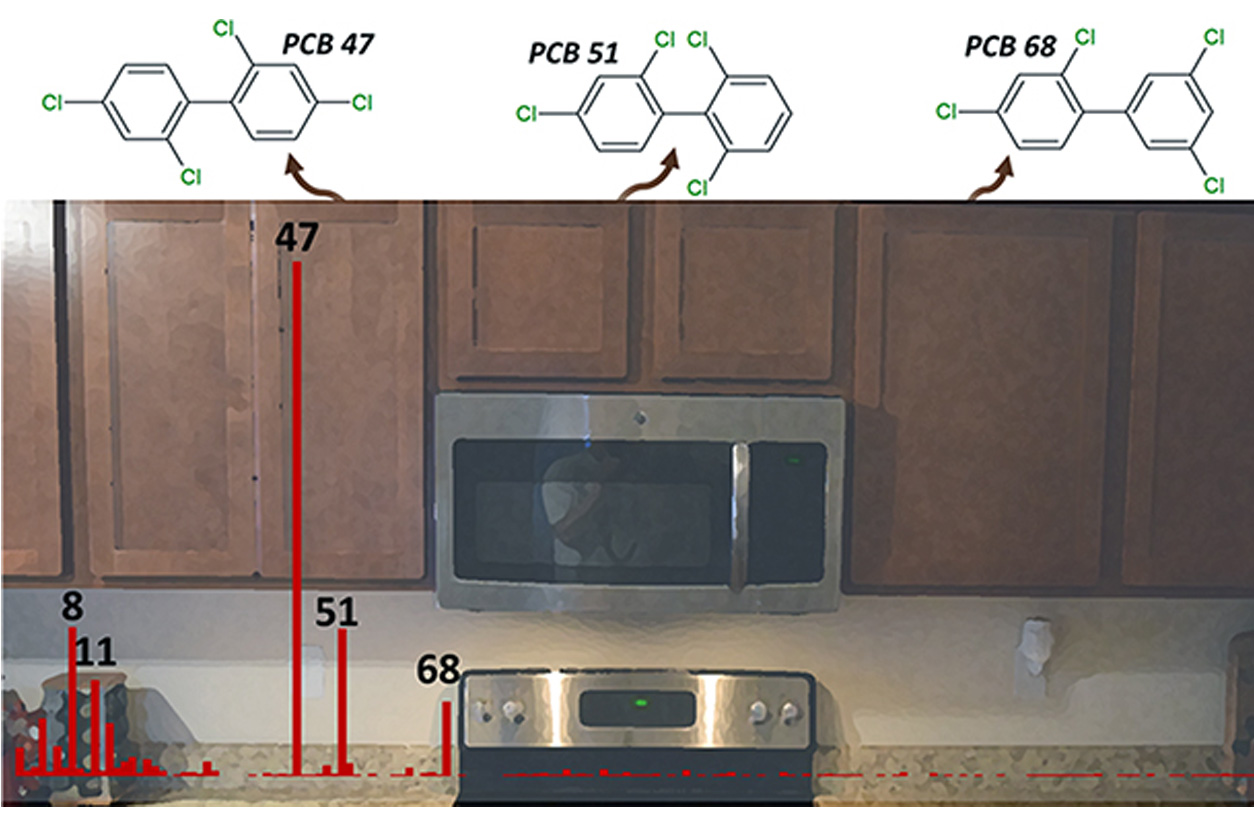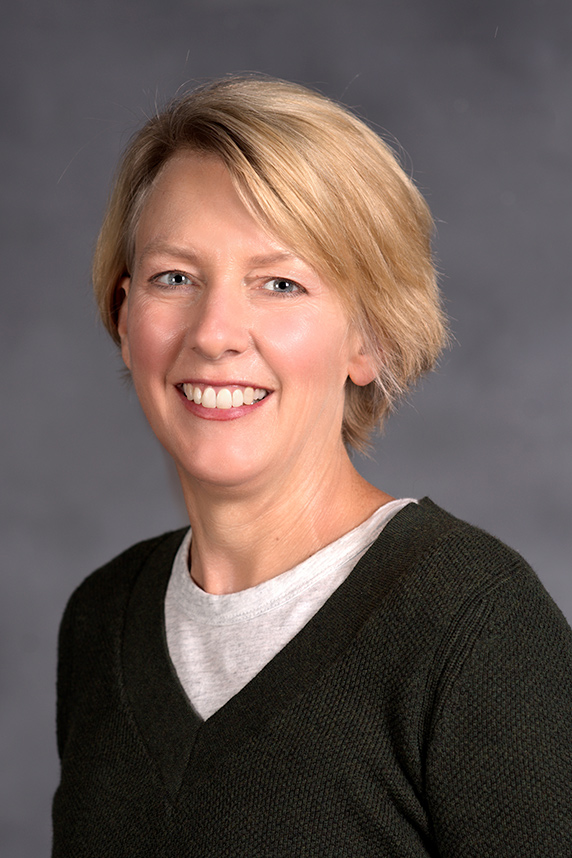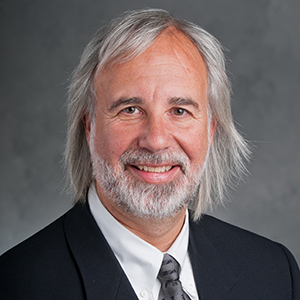Germany now requires stricter controls for manufacturers using a chemical called 2,4-dichlorobenzoyl peroxide (2,4-DCBP) after polychlorinated biphenyls (PCBs) were discovered in fumes from a sealant used on kitchen cabinets. This connection was reported by the NIEHS-supported Iowa Superfund Research Program (ISRP) at the University of Iowa. Exposure to PCBs has been linked to a range of health problems, including metabolic and neurological diseases and cancer.
It all started with a graduate course in which SRP trainees set out to learn how to use passive samplers in their own homes to detect airborne PCBs and analyze data. Nicholas Herkert, Ph.D., who at the time was a doctoral student helping to lead the course, noticed a strange signal in the data the students collected, but no clear pattern.
 Using skills he acquired as an ISRP trainee, Herkert is now part of the NIEHS-funded Human Health Exposure Analysis Resource Lab at Duke University. (Photo courtesy of Duke University)
Using skills he acquired as an ISRP trainee, Herkert is now part of the NIEHS-funded Human Health Exposure Analysis Resource Lab at Duke University. (Photo courtesy of Duke University)“I knew from experience analyzing samples that we were looking at something unique,” he said. “It was especially surprising that the highest levels were measured in my own home, but it also gave me an opportunity really dive in and do more testing to narrow down the source.”
PCBs are a large and complex group of chemicals that often occur in mixtures. They can be found in old insulation and electrical equipment, and as the byproducts of pigments used in paint colorants and building materials.
Pinpointing PCB sources
Herkert teamed up with fellow ISRP trainee Jacob Jahnke, who designed a specialized technique to collect and measure PCBs on flat surfaces.
“Jacob’s sampler was in the early stages of development, so it really benefited both of us to be able to field test it while isolating the PCB signal,” Herkert recalled.
Together, they determined that the PCBs were off-gassing from new wooden cabinets in Herkert’s kitchen — specifically the sealant material used on them.
Herkert began exploring what was in the cabinet sealant and how it was made.
“It was so fascinating to see Nick pulling on this thread,” said ISRP Director Keri Hornbuckle, Ph.D. “He was like a detective trying to tease out what these compounds were and where they came from.”
 The team found unexpected PCB chemicals off-gassing from new kitchen cabinetry. (Image reprinted with permission from Herkert NJ, et al. 2018. Emissions of PCBs 47, 51, and 68 from polymer resin on kitchen cabinets as a non-Aroclor source to residential air. Environ Sci Technol 52(9):5154–5160. Copyright 2021, American Chemical Society)
The team found unexpected PCB chemicals off-gassing from new kitchen cabinetry. (Image reprinted with permission from Herkert NJ, et al. 2018. Emissions of PCBs 47, 51, and 68 from polymer resin on kitchen cabinets as a non-Aroclor source to residential air. Environ Sci Technol 52(9):5154–5160. Copyright 2021, American Chemical Society)Through detailed literature and patent reviews, Herkert found that the silicone polymer sealant was created using 2,4-DCBP, a chlorinated compound, in the manufacturing process.
“It seemed like the PCB chemicals detected in my kitchen were likely unintentional byproducts of this process because all the right ingredients were there,” Herkert said.
He reported his discovery of airborne PCBs in kitchens and his hypothesis about their origin in 2018.
Informing health protections
Later, in Germany, members of a community near a silicone polymer production plant complained about white flakes in the air and on their crops. Researchers from a German regulatory agency investigated and found high levels of the same PCBs Herkert had discovered in his kitchen.
Their study confirmed Herkert’s hypothesis that these PCBs were indeed unintentional byproducts of the manufacturing process using 2,4 -DCBP.
The authors explained that the German regulatory agency amended its rules to require stricter controls for facilities using this chemical. The agency also asked the facility in question to change their practices and use a different chemical in their manufacturing process. The facility agreed, and the research team reported a decrease in PCB emissions to the surrounding community.
 As ISRP director, Hornbuckle leads a team of interdisciplinary researchers focused on identifying sources of airborne PCBs and how they affect human health. (Photo courtesy of the University of Iowa)
As ISRP director, Hornbuckle leads a team of interdisciplinary researchers focused on identifying sources of airborne PCBs and how they affect human health. (Photo courtesy of the University of Iowa)“This is really the environmental health scientist’s dream,” Herkert said. “Often, when we make important discoveries, there are negative implications for human exposure or health, but ultimately we want to see our research develop into something positive. What more could you ask for?”
Hornbuckle echoed Herkert’s sentiments, adding that even student researchers can make discoveries that change human lives for the better.
“As scientists, we hope our work leads to direct improvements to human health, but that path is often complex and difficult to document,” she said. “It’s really inspiring for our trainees, and even for long-standing scientists, to see that research really can make a difference.”
Citations:
Herkert NJ, Jahnke JC, Hornbuckle KC. 2018. Emissions of tetrachlorobiphenyls (PCBs 47, 51, and 68) from polymer resin on kitchen cabinets as a non-Aroclor source to residential air. Environ Sci Technol 52(9):5154–5160.
Hombrecher K, Quass U, Leisner J, Wichert M. 2021. Significant release of unintentionally produced non-Aroclor polychlorinated biphenyl (PCB) congeners PCB 47, PCB 51 and PCB 68 from a silicone rubber production site in North Rhine-Westphalia, Germany. Chemosphere; doi: 10.1016/j.chemosphere.2021.131449.
(Adeline Lopez is a research and communication specialist for MDB Inc., a contractor for the NIEHS Superfund Research Program.)









